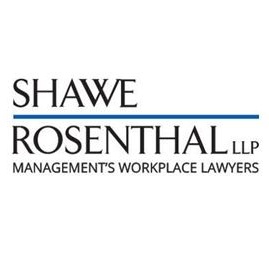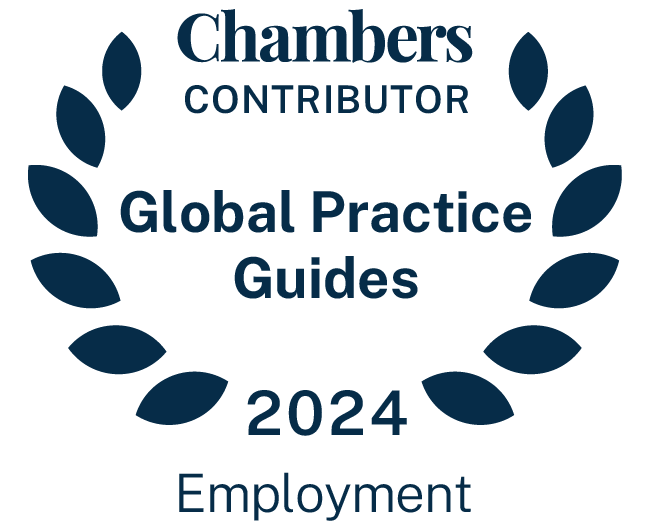NLRB Releases Multitude of Advice Memos
The National Labor Relations Board’s Office of the General Counsel (OGC) released 44 advice memos during a five-day period, from February 11-16, 2018. Some of these memos were originally issued as far back as 2009, but they were not released to the public until this month. The positions asserted in some of the memos were subsequently addressed in Board opinions, while others are very specific to the individual situation. There are a number of them, however, that offer some insight into matters of general interest. It is worth noting that the vast majority of these memos were issued during the pro-union Obama administration, and that the current General Counsel has already expressed interest in revisiting some of these issues.
- Market 450 LLC d/b/a The Food Market (July 28, 2017). An employee’s intercession on behalf of a co-worker regarding a tip constituted protected concerted activity regarding the terms and conditions of employment under Section 7 of the National Labor Relations Act, and therefore terminating the employee for “sticking [the employee’s] nose in other people’s business” was a violation of the NLRA.
- North Shore Ambulance and Oxygen Service, Inc. (June 26, 2017). Under Total Security Management, the Board held that an employer must bargain with the union before imposing discretionary discipline when the union has been certified or recognized but has not yet entered into a collective bargaining agreement. If the employer unlawfully imposes discipline, the Board will grant reinstatement and backpay, unless the employer establishes that the employee is terminated for cause. However, according to the OGC, once the employer makes that showing, the Board’s Regional Director may show that there are mitigating circumstances or that the employer has not imposed similar discipline on other employees for similar misconduct. Then the employer would be required to show that it would have imposed the discipline nonetheless. If the employer cannot make this showing, reinstatement and backpay may be awarded.
- JBS USA, LLC (May 25, 2017). The employer violated Section 8(a)(1) when it terminated an employee who insisted on recording investigatory meetings with a manager in violation of the company cell phone policy. According to the OGC, although the recording activity itself was not protected concerted activity, it implicated Section 7 concerns. The employer’s cell phone policy was overbroad, as it banned all recording without carving out exceptions for Section 7 activity (including recording images of protected picketing; documenting unsafe workplace equipment, hazardous working conditions, or inconsistent application of employer rules; documenting and publicizing discussions about terms and conditions of employment; or recording evidence to preserve it for later use in administrative or judicial forums in employment-related actions).
- Continental Carbon Co., (April 26, 2017). The OGC stated that the Board should decline to defer resolution of a discharge case to the parties’ grievance-arbitration process and assert jurisdiction because “the employer engaged in a pattern of hostility toward [the employee] for grievance activities and demonstrated a lack of respect for the grievance-arbitration machinery such that the parties’ alternative process cannot be relied upon to fairly resolve this dispute.”
- Williams-Sonoma Direct, Inc. (April 17, 2017). Under Atlantic Steel, an employee’s otherwise protected Section 7 activity becomes unprotected if it is sufficiently egregious or offensive. The Board applies the following factors to make this determination: (1) the place of the discussion; (2) the subject matter of the discussion; (3) the nature of the outburst; and (4) whether the outburst was, in any way, provoked by an employer’s unfair labor practice. Under this analysis, an employee’s statement during a workplace safety meeting that the employee might as well hit fellow employees if a near-miss would be treated the same as a collision and another employee’s statement that “dead men can’t talk” were found not to be objective threats of physical harm to fellow employees and that the Atlantic Steel factors weighed in favor of protection.
- Toyota Motor Manufacturing, Kentucky Inc. (April 7, 2017). Employees have a Section 7 right to display union insignia at work, including the wearing of pro-union clothing. An employer may restrict this right if “special circumstances exist which make the rule necessary to maintain production or discipline, or to ensure safety.” The OGC found that the employer did not establish legitimate safety concerns that would have established such special circumstances, even though the worker worked in a dangerous work area that required the wearing of high-visibility clothing. The OGC rejected the employer’s argument that the union lettering on the clothing was distracting, diminished the high-visibility nature of the shirt, and was confusing because managers’ high-visibility shirts also have large lettering.
- Team Fishel (March 23, 2017). The OGC urged the Board to extend the holding in Purple Communications, which allows employees to use the employer’s e-mail system for Section 7 protected communications, to permit employees’ use of a company-provided internet system for social media activity on company equipment. The OGC’s position in this memo has more recently been called into question, given the current General Counsel’s intention to revisit Purple Communications, as set forth in his December 1, 2017 memorandum, GC 18-02“Mandatory Submissions to Advice.”
- Diversified Restaurant Holdings, Inc. d.b.a. Bagger Dave’s Burger Tavern (February 13, 2017). An employee was inadvertently given access to employee wage information in the course of his duties, which he then photographed and shared with his co-workers. The OGC found that his termination for violating the confidential information policy violated the NLRA, since Section 7 protects employees’ ability to share wage information.
- DFW Security Protective Force (February 6, 2017). A company is a “perfectly clear” successor that is bound to the predecessor’s bargaining obligation if it hires the predecessor’s employees and actively or tacitly misleads employees or their union into believing that the employees will be retained by the successor under the same terms and conditions, or at least fails to clearly announce its intent to establish new terms and conditions prior to or simultaneous with its invitation to accept employment. The OGC found the employer here to be a perfectly clear successor, despite the fact that the offer letter contained a general statement that employees’ work duties, locations, shifts, and post assignments were subject to change, because the OGC found this was not sufficiently specific to constitute a “clear announcement.”
- Southern California Gas (November 8, 2016). The OGC found an agreement between the employer and union to give priority to union members in filling internal job postings to be unlawful because it interfered with employees’ Section 7 rights to refrain from union membership.
- Joseph Hospital (April 9, 2015). The OGC encouraged the Board to extend Purple Communications to permit employees to use the employer’s internet and intranet systems for protected Section 7 communications. As noted previously, this position is now questionable, given the current General Counsel’s questioning of Purple Communications.
- Milveen Environmental Services (October 28, 2013). The OGC found that a company was a successor employer, despite the fact that there was an intervening non-union employer for six months, and therefore it was bound to the collective bargaining obligations of the predecessor employer. The company was deemed a successor under the Supreme Court case of Burns International Security Services v. NLRB, “because a majority of its employees were bargaining unit employees of the predecessor employer and there was substantial continuity between the enterprises, notwithstanding the hiatus caused by the intervening non-union employer.” The NLRB adopted the Administrative Law Judge’s same finding on this issue, and the NLRB’s order was enforced by the U.S. Court of Appeals for the Third Circuit.







